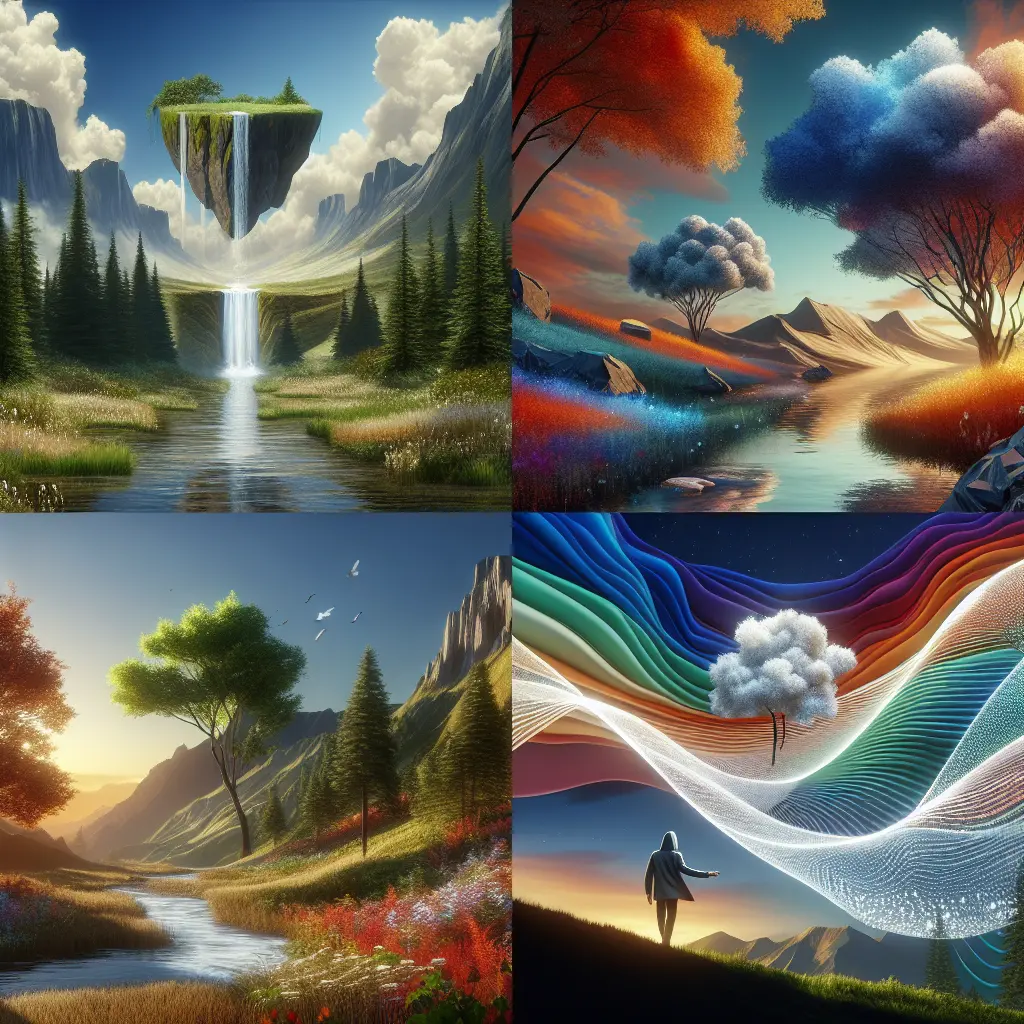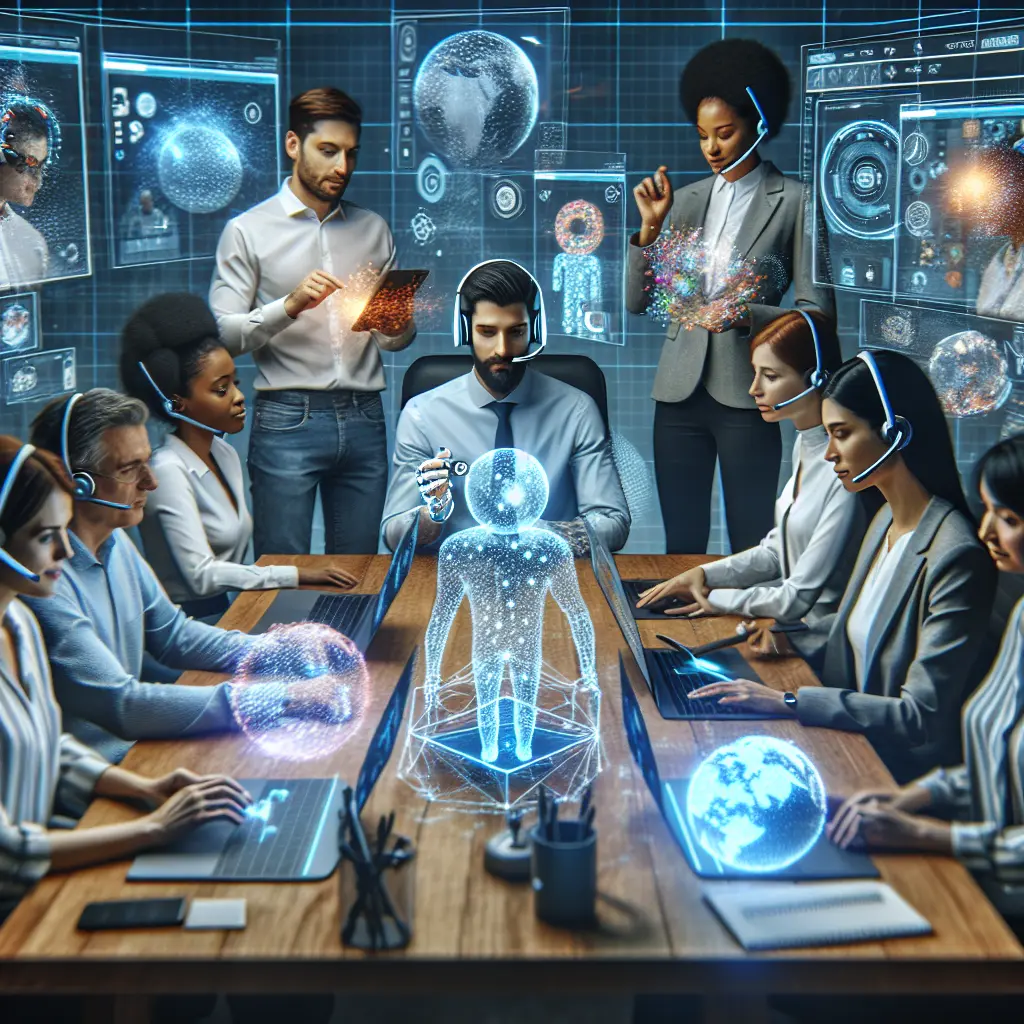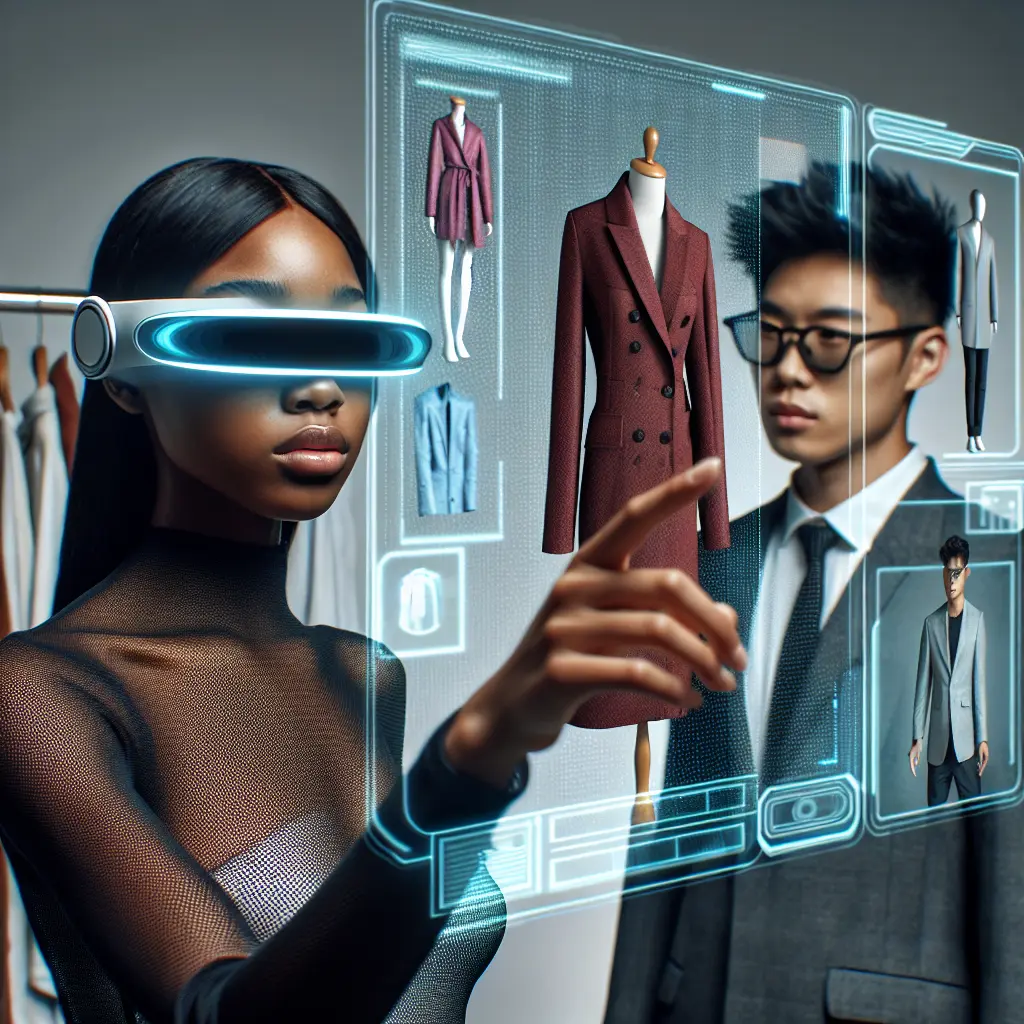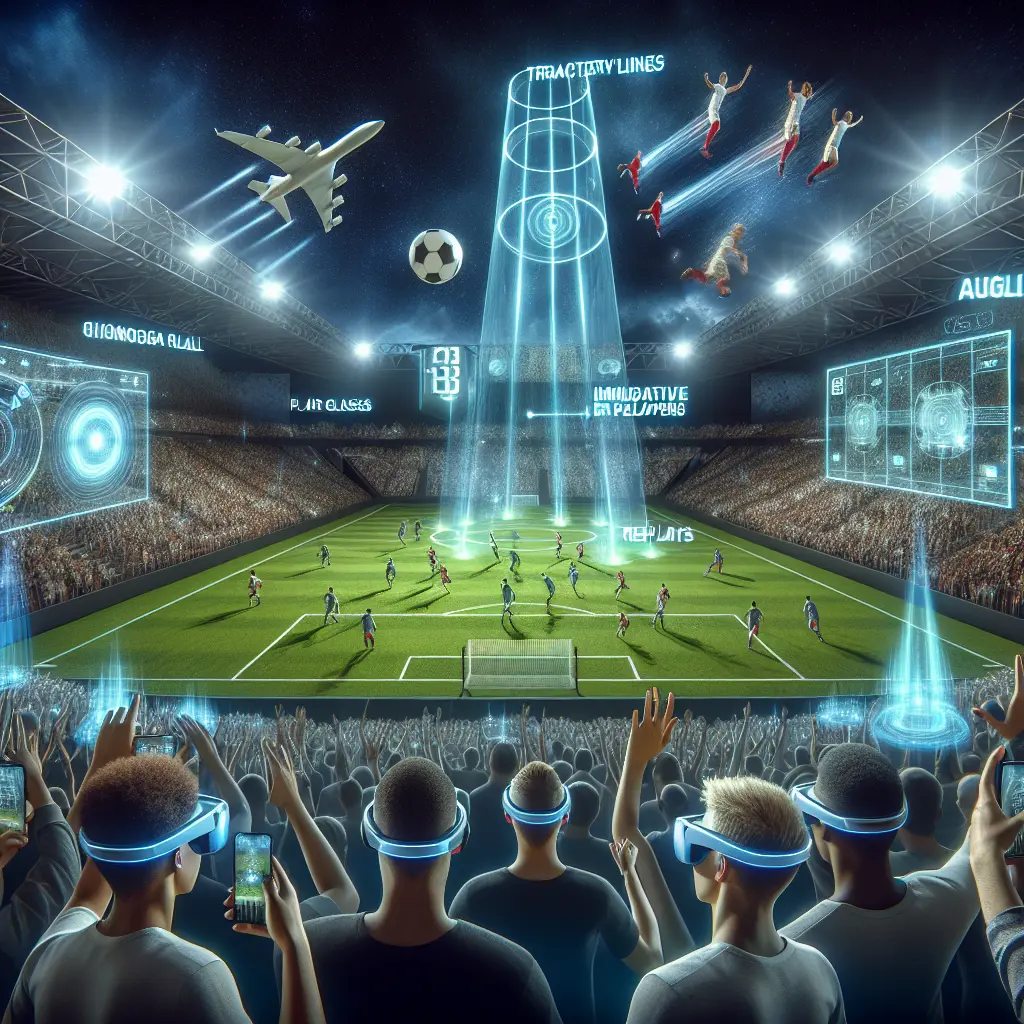In today's rapidly evolving digital landscape, the integration of augmented reality in remote collaboration is transforming how we work, creating a powerful synergy that significantly boosts workplace productivity. As businesses increasingly embrace remote teamwork with AR, the potential to enhance collaboration across diverse fields, from arts and entertainment to design and media, becomes boundless. Augmented reality tools for remote work are redefining virtual meetings, allowing creative professionals to engage in immersive collaboration that transcends geographical boundaries. This technological advancement not only enhances workplace efficiency but also fuels a productivity boost with augmented reality, making it an indispensable asset for remote teams.
Augmented reality in digital creativity is paving the way for innovative solutions in the creative industries, empowering professionals with AR technology in arts to explore uncharted territories of creativity. The entertainment industry, too, is witnessing a transformation, as augmented reality creative collaboration brings new dimensions to storytelling and media experiences. By leveraging AR in media and entertainment, professionals can craft compelling narratives that captivate audiences like never before.
Furthermore, augmented reality for remote teams fosters an environment where virtual collaboration tools AR seamlessly integrate into daily workflows, ensuring tasks are executed with precision and creativity. In the realm of design and arts, augmented reality in design and arts provides a dynamic platform for artists and designers to experiment and innovate. As businesses continue to explore the possibilities of augmented reality in remote collaboration, the potential for growth and creativity is limitless. This exploration sets the stage for a deeper dive into how AR is revolutionizing the way we work and collaborate remotely.
Augmented reality (AR) is rapidly redefining the landscape of remote collaboration, serving as a catalyst for boosting workplace productivity. As businesses continue to embrace the potential of AR in workplace productivity, we are witnessing a transformative shift across various sectors, particularly in arts and entertainment. Let's explore how augmented reality remote collaboration is reshaping these industries and enhancing collaboration with AR.
In recent years, AR has emerged as a powerful tool in remote collaboration, allowing teams to transcend geographical barriers and engage in immersive collaboration. This is particularly evident in the creative industries, where augmented reality arts and entertainment are gaining traction. By enabling real-time, interactive experiences, AR tools for remote work are paving the way for innovative storytelling and content creation.
Augmented Reality in Remote Collaboration
A notable example of AR in virtual meetings is the use of spatial computing platforms like Spatial.io. These platforms allow users to interact with 3D holograms and digital content in a shared virtual space, thus enhancing workplace efficiency with AR. This approach not only facilitates seamless communication but also offers a more engaging way for teams to collaborate on complex projects, such as architectural designs or artistic installations.
Spatial.io's Impact: By utilizing Spatial.io, companies have reported a 30% increase in project completion rates, showcasing the productivity boost with augmented reality source.
The entertainment industry is particularly poised to benefit from AR technology in arts. With the advent of augmented reality creative collaboration, artists and designers can now experiment with new forms of media that were previously unimaginable.
Example: Augmented Reality in Concerts: One intriguing development is the use of AR in live music performances. For instance, during Coldplay's recent world tour, the band incorporated augmented reality to create immersive concert experiences. Fans could view digital art displays synchronized with the live music through their smartphones, thereby enhancing the overall experience.
Remote Teamwork with AR
Coldplay's Tour Success: This integration led to a significant increase in audience engagement and ticket sales, underscoring the value of AR for creative professionals source.
Remote teamwork with AR is no longer just a futuristic concept; it is a present-day reality. Companies are increasingly adopting virtual collaboration tools AR to streamline workflows and foster innovation.
Real-World Application: Product Design: In the realm of design and arts, augmented reality in design and arts has enabled teams to collaborate on product development in unprecedented ways. A company like IKEA has utilized AR to allow designers from different parts of the world to work together on new furniture models. By visualizing prototypes in 3D before production, IKEA has significantly reduced the time and cost associated with product development.
IKEA's Efficiency Gains: This strategic use of AR has resulted in a 25% reduction in design errors, showcasing how AR in digital creativity can optimize processes source.
Enhancing Workplace Efficiency with AR
The integration of AR into daily workflows is proving to be a game-changer for many businesses. By providing an interactive and visual platform for information sharing, AR for remote teams enhances productivity and creativity.
Example: Training and Onboarding: Augmented reality is also transforming employee training and onboarding processes. Companies like Boeing are using AR glasses to provide step-by-step assembly instructions to their technicians. This not only speeds up the learning curve but also minimizes human errors.
Boeing's Training Innovations: Implementing AR has cut training time by nearly 40%, illustrating the significant impact of immersive collaboration with AR on operational efficiency source.
Augmented Reality Creative Industries
The creative industries are undergoing a profound transformation, driven by augmented reality creative industries initiatives. From fashion to media, AR is enabling professionals to push the boundaries of what is creatively possible.
Case Study: Fashion Shows: Fashion brands such as Gucci have begun using AR to enhance their fashion shows. By providing audiences with virtual try-ons and interactive content, these brands are offering a novel way for customers to engage with their collections.
Gucci's Digital Innovation: This approach has not only captivated audiences but also led to a 15% increase in online sales during fashion week events source.
Future Prospects
As we continue to explore the possibilities of augmented reality in remote collaboration, the potential for growth and creativity remains limitless. The ongoing advancements in AR technology promise to further enhance workplace productivity and redefine how we collaborate across distances.
By integrating augmented reality into our daily workflows, businesses can unlock new levels of efficiency and innovation, positioning themselves at the forefront of their respective industries. As highlighted by these examples and case studies, the benefits of embracing AR are manifold, making it an indispensable asset for modern organizations striving for excellence in a digital world.
Augmented reality is undeniably reshaping remote collaboration, offering transformative opportunities across various sectors. Here's a quick recap of the key insights discussed:
Remote Collaboration: AR is breaking down geographical barriers and enabling immersive, real-time interactions, as demonstrated by platforms like Spatial.io, leading to significant productivity gains.
Arts and Entertainment: The creative industries are leveraging AR for innovative storytelling and audience engagement. Coldplay's use of AR in their concerts significantly enhanced fan experiences and boosted ticket sales.
Product Design: Companies like IKEA are utilizing AR to streamline design processes, reducing errors and speeding up product development by enabling global teams to collaborate efficiently.
Workplace Efficiency: AR is enhancing training and onboarding processes, with Boeing's use of AR glasses cutting training time and minimizing errors, showcasing its potential in operational efficiency.
Fashion Industry: Brands like Gucci are adopting AR to elevate fashion shows, providing audiences with interactive experiences that have led to increased online sales.
The integration of AR into business workflows not only enhances productivity and creativity but also positions organizations at the forefront of their industries. The future of augmented reality promises endless possibilities for growth and innovation.
As we continue to explore the capabilities of AR, I invite you to share your own experiences and thoughts on how augmented reality has impacted your work or creative endeavors. Your insights could inspire others to embrace this exciting technology. Let's continue this conversation in the comments below!
Stay curious and innovative.






Leave a Comment